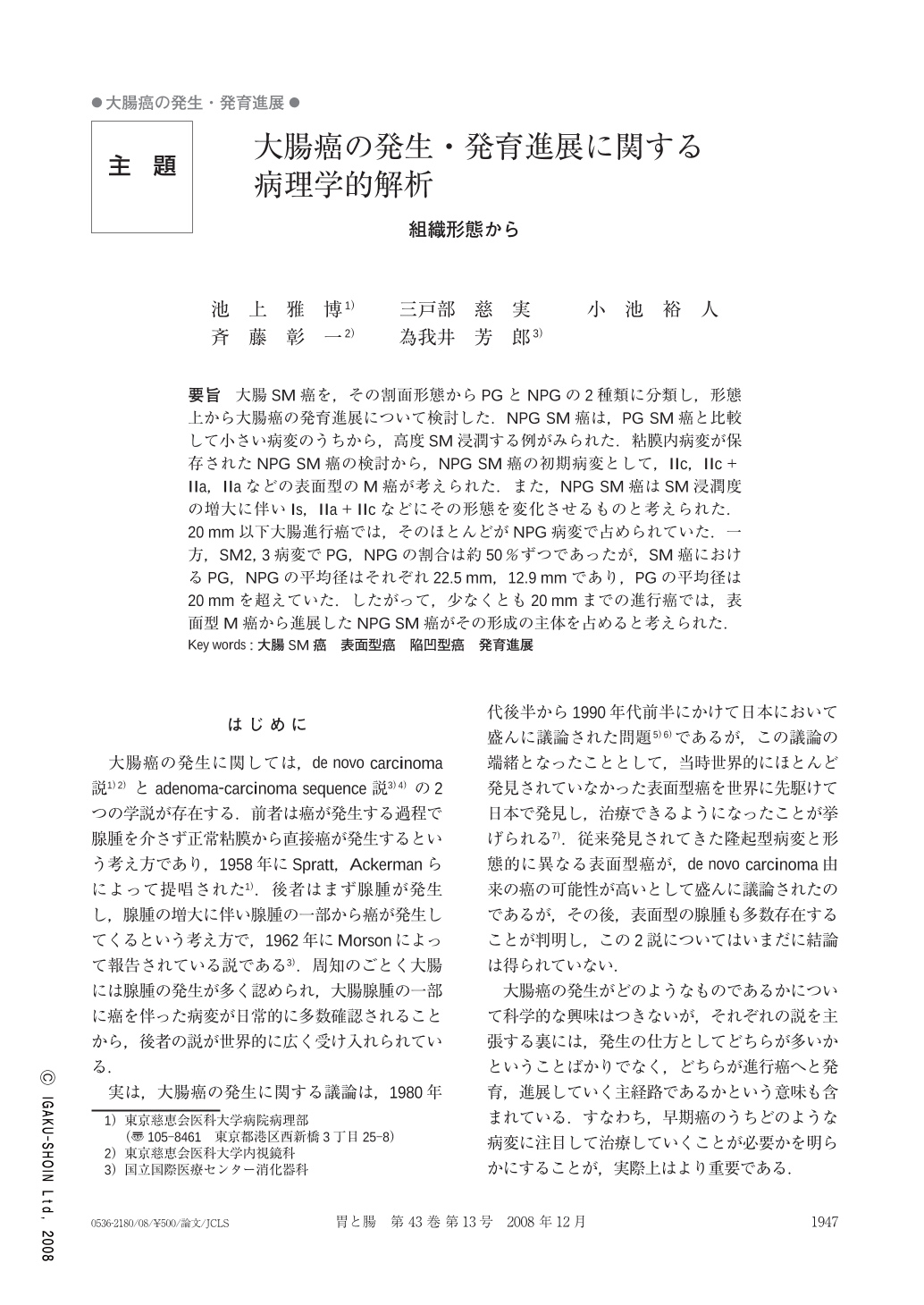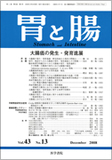Japanese
English
- 有料閲覧
- Abstract 文献概要
- 1ページ目 Look Inside
- 参考文献 Reference
- サイト内被引用 Cited by
要旨 大腸SM癌を,その割面形態からPGとNPGの2種類に分類し,形態上から大腸癌の発育進展について検討した.NPG SM癌は,PG SM癌と比較して小さい病変のうちから,高度SM浸潤する例がみられた.粘膜内病変が保存されたNPG SM癌の検討から,NPG SM癌の初期病変として,IIc,IIc+IIa,IIaなどの表面型のM癌が考えられた.また,NPG SM癌はSM浸潤度の増大に伴いIs,IIa+IIcなどにその形態を変化させるものと考えられた.20mm以下大腸進行癌では,そのほとんどがNPG病変で占められていた.一方,SM2,3病変でPG,NPGの割合は約50%ずつであったが,SM癌におけるPG,NPGの平均径はそれぞれ22.5mm,12.9mmであり,PGの平均径は20mmを超えていた.したがって,少なくとも20mmまでの進行癌では,表面型M癌から進展したNPG SM癌がその形成の主体を占めると考えられた.
Development and progression of colorectal cancers were studied by examining growth patterns in resected submucosal invasive cancers. These pathological lesions were classified into two types, polypoid growth type(PG)and nonpolypoid growth type(NPG), based on cross sectional views.
NPG type cancers tended to show massive submucosal invasion, even when extremely small, compared to PG type cancers. NPG type cancers were found to originate from intramucosal superficial type cancer(IIc, IIc+IIa and IIa gross type)through the study of intramucosal lesions associated with submucosal invasive cancers.
Submucosal invasive NPG type cancers tended to change their macroscopic features Is to IIa+IIc shape with the progression of submucosal invasion. Most of the advanced cancers smaller than 20mm in diameter were NPG type cancers. In contrast, the ratio of PG type to NPG type cancers, which had invaded deeply into the submucosal layer(SM2, SM3)was equal. However, NPG type cancers(12.9mm) were extremely smaller than PG type cancers(22.5mm in size).
In conclusion, the main origin of development for advanced cancers of less than 20mm in diameter was suggested to be from superficial type cancers.

Copyright © 2008, Igaku-Shoin Ltd. All rights reserved.


